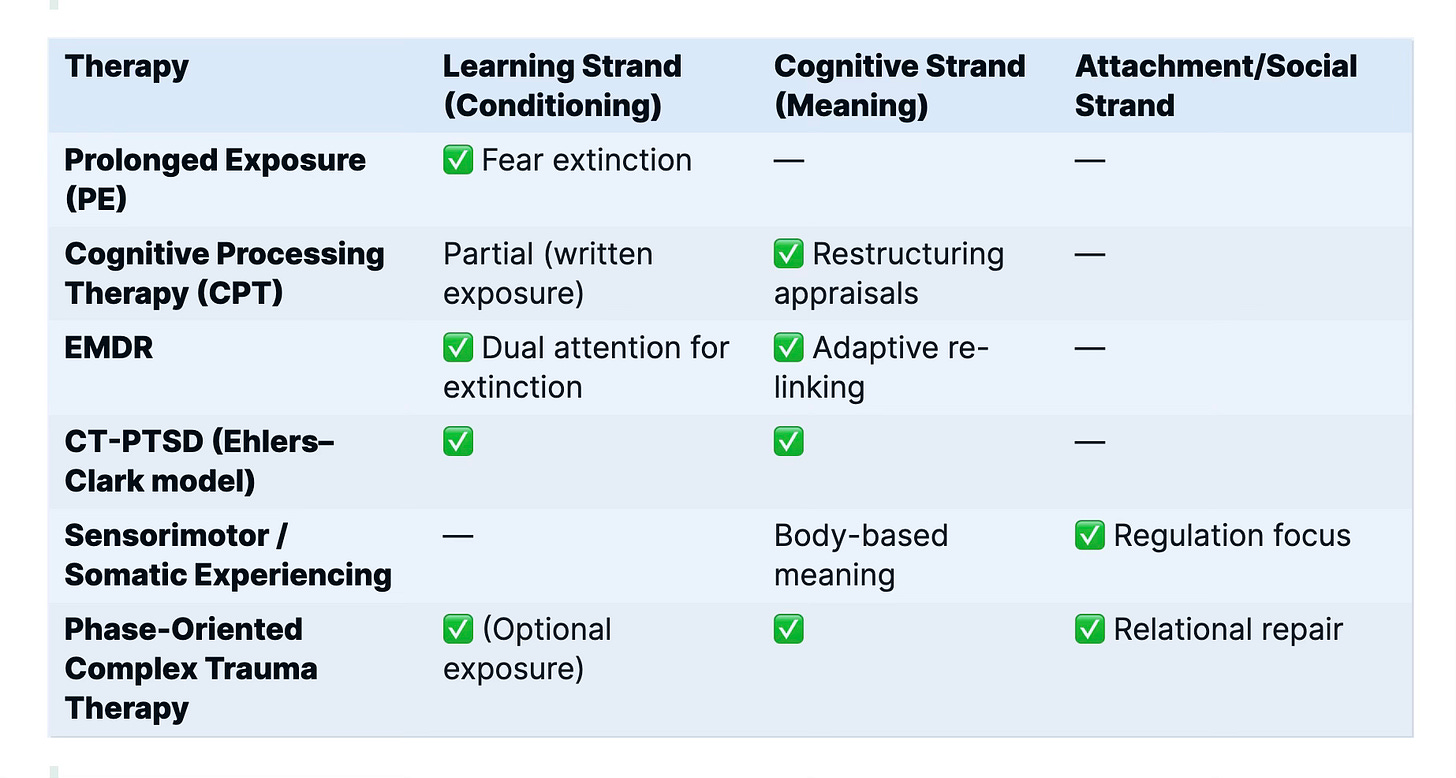
Modern trauma theories stem from three foundational psychological models, as summarized by Jonathan Bisson 2009. Each model emphasizes a different mechanism for the development and persistence of traumatic symptoms. Nearly all contemporary trauma therapies are adaptations or integrations of these core ideas.
1. Classical Conditioning & Learning Theory
Key Idea: Fear responses are conditioned during traumatic events and maintained by avoidance behaviors (negative reinforcement).
Origin: Pavlov (conditioning) and Mowrer's two-factor theory (acquisition + maintenance).
Modern Descendants:
-Prolonged Exposure Therapy
-EMDR
-Dual Representation Theory Brewin)
Proposed Mechanism: Stimuli associated with trauma trigger conditioned fear responses; avoidance prevents extinction.
2. Classical Cognitive/Psychodynamic Theory
Key Idea: Trauma disrupts internal cognitive schemas and processing systems, resulting in persistent distress until integration occurs.
Origin: Freud (psychodynamic), Horowitz (stress-response theory), Brewin & Ehlers (cognitive models).
Modern Descendants:
Trauma-focused CBT (e.g., CT-PTSD, CPT)
Schema therapy
Psychodynamic trauma therapies
Proposed Mechanism: Maladaptive appraisals and fragmented memories maintain the sense of ongoing threat.
3. Attachment Theory Caregiving Environment)
Key Idea: Early attachment patterns form the basis for emotion regulation, threat appraisal, and social support use.
Origin: John Bowlby Attachment Theory)
Modern Descendants:
-Mentalization-Based Therapy
-Developmental/Complex Trauma Models
-Sensorimotor Psychotherapy
Proposed Mechanism: Secure attachment buffers trauma; insecure attachment increases vulnerability to PTSD.
Synthesis in Modern Therapies
Most trauma therapies today combine elements:
-Fear extinction via exposure (conditioning model)
-Cognitive restructuring of appraisals (cognitive model)
-Emotional regulation and relational healing (attachment/social model)
Illustration:
Conclusion:
Current theories view trauma as a disorder of memory (more than the memory but the response to it), meaning, and social regulation. Modern treatments integrate classical conditioning, cognitive restructuring, and attachment repair mechanisms.
Reference:
Jonathan Bisson, "Psychological and Social Theories of PTSD," 2009.



